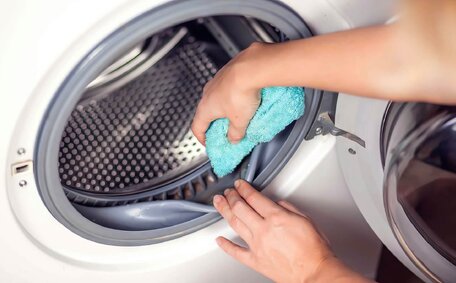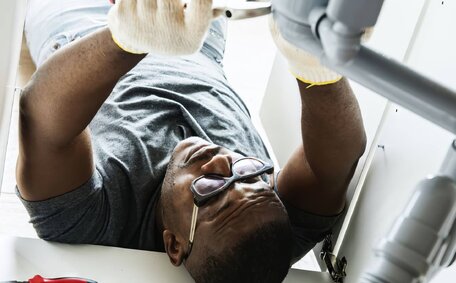What is Pipe Relining and How Does it Work?
Drain pipe relining is a trenchless repair method that installs an epoxy resin-impregnated liner into an existing pipe to form a new lining, termed cured-in-place pipe (CIPP), without the need for excavation.
Contrasting with conventional methods, pipe relining is a non-invasive solution that eliminates extensive disruptions and garden damage. This approach provides a more cost-effective alternative to traditional pipe replacements.
After inserting the epoxy liner into the damaged section, it’s expanded using air or hot water steam to conform to the pipe walls, which then cures to form a seamless new lining that secures against leaks, cracks, and other common issues.
Pipe relining addresses a range of drainage problems, such as blocked toilets and sewer line defects, in pipes made from PVC, concrete, clay, galvanised steel, cast iron and others. The new CIPP lining is typically more durable and has a longer lifespan than the original piping.
Typical Depths and Limitations for Pipe Relining
Our pipe relining services cater to pipes with diameters from 70mm to 150mm; pipes outside this scale may not be eligible for relining.
Pipe relining typically extends to depths of about 4 metres, offering a cost-effective alternative to deeper, more expensive methods.
Factors such as sharp bends, decreasing diameters, partial collapses, and obstructions in sewer junctions larger than 150mm, present challenges as the liner must fully expand to form an effective repair.
Asbestos cement and galvanised iron pipes, prone to rapid deterioration, typically require replacement rather than relining, whereas cast iron pipes may be difficult to reline due to issues with rust and scale accumulation.
Accessing Pipes for Deep Relining
To access pipes at depths beyond 4 metres for relining, methods we use may include digging up access points through excavation, demonstrating the importance of pinpointing when we need to dig and when we do not. This could involve using specific pipe replacement methods to dig down and expose broken pipes in the network so they can be entered directly.
Professional pipe relining specialists, including our team at Cambridge Park Plumbing, employ cutting-edge drain cameras and inspection tools to address and resolve issues within complex piping systems.
Pipe relining can effectively address issues at depths exceeding 4 metres despite the complexities and additional time required, restoring damaged pipes to their former functionality.
With the right expertise and technology, what need be understood is that almost any section of damaged piping can be accessed, inspected, and restored through trenchless methods, no matter the depth or complexity involved.
Specialized Equipment Used for Deep Pipe Relining
Relining deep pipes often requires specialised equipment to ensure access and inspection, encapsulating all you need know about pipe restoration. This includes:
- High-powered CCTV cameras - Used to visually inspect deep pipes, locating defects and access points.
- High pressure water jetters - Employed to clean interior pipe walls by blasting away debris, rust and other buildup.
- Pipe bursting tools - Mechanically break up collapsed sections or tough blockages that prevent liner insertion.
- Remote cutters - Robotic systems with rotating heads to cut roots, protrusions and to clear a smooth path for lining.
Our experts employ cutting-edge equipment capable of overcoming any obstructions during the relining of stormwater and sewer systems at any depth, assuring a full inflation and bonding of liners without the need for excavation.
Materials that Can Be Relined at Various Depths
Essential facts about pipe relining for blocked drains include that the new pipe lining made of epoxy resin is the most widely used material due to its high strength, durability, and resistance to effects like future root intrusion. Epoxy resin liners are highly effective across various types pipe at a wide range of depths.
Even collapsed sections of piping composed of materials like clay, concrete or galvanised steel can also be suitable for trenchless relining at depths over 4 metres when accessed correctly. Our professional team assesses each unique pipeline layout to determine the viability for blocked pipes to be relined.
In instances of more degrading pipe materials like asbestos cement, substitute epoxy resin liners for pipe replacement restore integrity, prevent further corrosion and improve lifespan without needing full pipe replacement.
Professional Assistance for Deep Pipe Relining
It is critical to enlist professional help for drain repair, especially for deeper underground pipes, due to their complex layouts, challenging access points, and potential for extensive damage that necessitates expert repair.
Our team at Cambridge Park Plumbing did such a great job that we confidently recommend them for your pipe relining needs; we would recommend them with high confidence for our extensive expertise in deep damaged pipe repairs. We utilise specialised location equipment to identify problem areas within complicated pipe networks, and advanced robotic cutters to clear obstructions for liner insertion.
Here are some assurances: With precise access and years of experience, there’s a guarantee you’ll find our services reliable and thus, may consider us again for safe, effective deep restorations for your plumbing system. Our customers often find pipe relining worth the investment, preventing the need for disruptive excavations and offering convenience and long-term infrastructure integrity.
Contact our experienced team at Cambridge Park Plumbing on 1300 349 338 for top-notch pipe relining services that reaffirm your confidence in our expertise.
CCTV Inspections Before Relining
Conducting professional CCTV inspections prior to sewer pipe relining is essential, as high-definition drain cameras visually examine and diagnose pipeline issues, ensuring a focused and successful restoration.
Thorough video documentation allows our licenced technician the necessary time to call and identify what’s needed for the problem areas, including dealing with cracked broken pipes, gauge severity of damage, and precisely plan the pipe relining process. CCTV inspections also help determine if supplementary tasks like high-pressure jet cleaning are required beforehand.
Total pipe assessment through camera inspection includes:
- Pipe materials and dimensions
- Locations of cracks, leaks, blocked drain or collapses
- Presence of roots, grease buildup or other obstructions
With comprehensive insight into piping conditions, our team can tailor relining strategies, select suitable liner types if needed, and ensure every necessary preparation is completed for optimal restoration results.
Much like pre-purchase building inspections inform corrective work, CCTV drainage inspections enable proactive troubleshooting so pipe relining repairs proceed smoothly and successfully.
CCTV inspections also help determine if supplee buildup or other obstructions \
Proper Pipe Cleaning and Preparation
Comprehensive drain cleaning and preparation are crucial before relining. Techniques such as high-pressure water jetting, mechanical cutting, or manual rodding are employed to clear pipe interiors, facilitating the relining.
Any remaining scrapes, cracks or protrusions are removed using rotating robotic cutters so liners can form a consistent seal. Galvanised iron pipes may also need protective barrier coatings applied first to prevent corrosion interacting with the epoxy resin.
Taking these steps to clean up ensures prevention of failures, optimises adhesion and greatly contributes to the longevity of pipe relining repairs. At Cambridge Park Plumbing, we guarantee pipe relining solutions include effective cleaning and assure the area is thoroughly cleaned up after the surface preparation with every professional job.
Contact Us for Your Pipe Relining Needs
At Cambridge Park Plumbing, We are relining business specialists ready to handle any issue with your pipes. With over 15 years offering plumbing services and restoring old and damaged piping across Sydney, we have the expertise to find an effective no-dig relining solution for your home or business.
Contact us at 1300 349 338 or via email at [email protected] to schedule an appointment and investigate your trenchless pipe repair options.
Leveraging advanced CCTV drain inspections, we assess and diagnose pipe issues to deliver relining solutions that exceed expectations. From pinhole leaks to root intrusions to pipe collapses, we promise dependable and enduring repairs.
For expert, cost-efficient pipe relining solutions, you can rely on our dedicated specialists at Cambridge Park Plumbing, proudly serving Cambridge Park and nearby regions.





